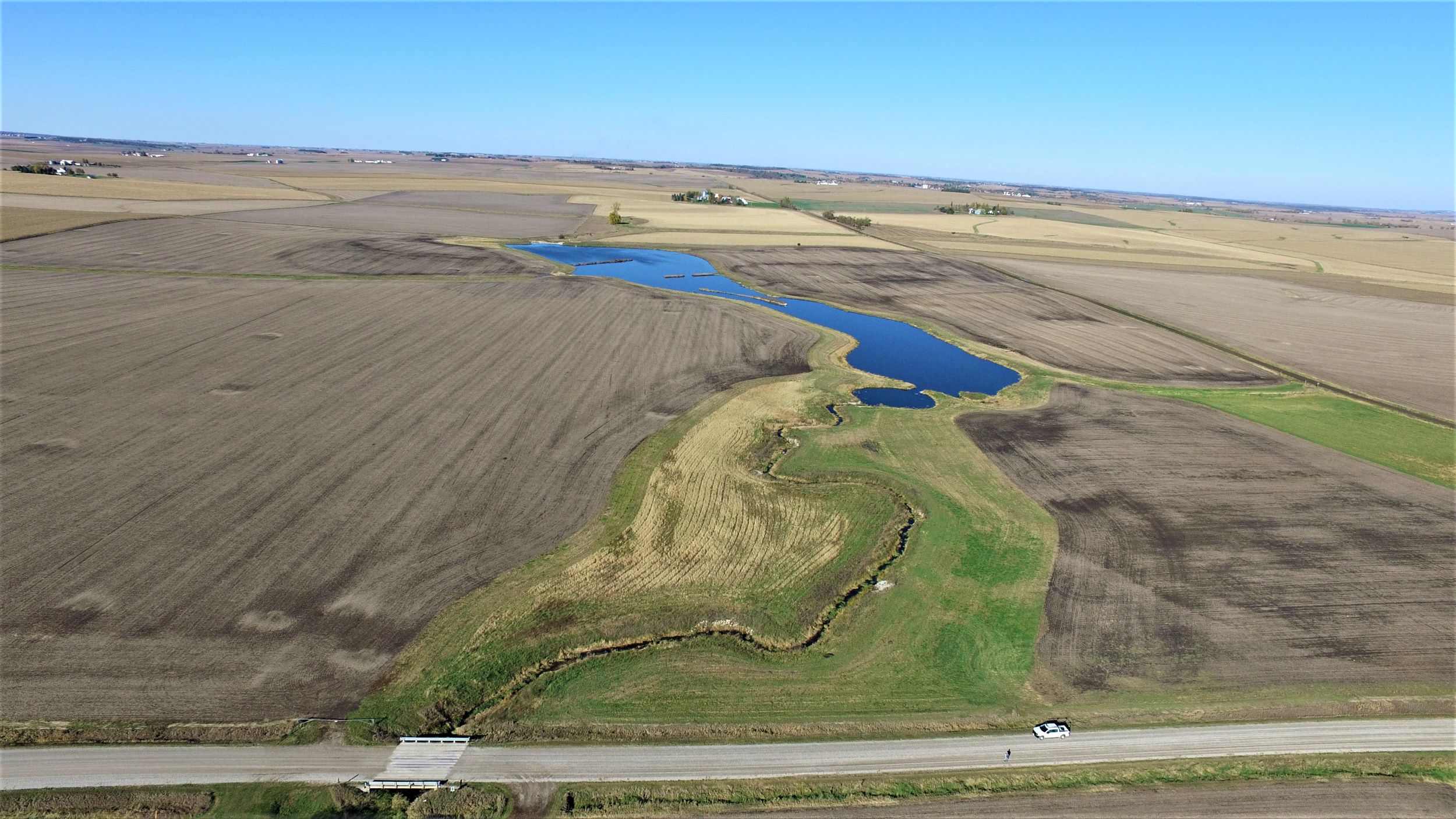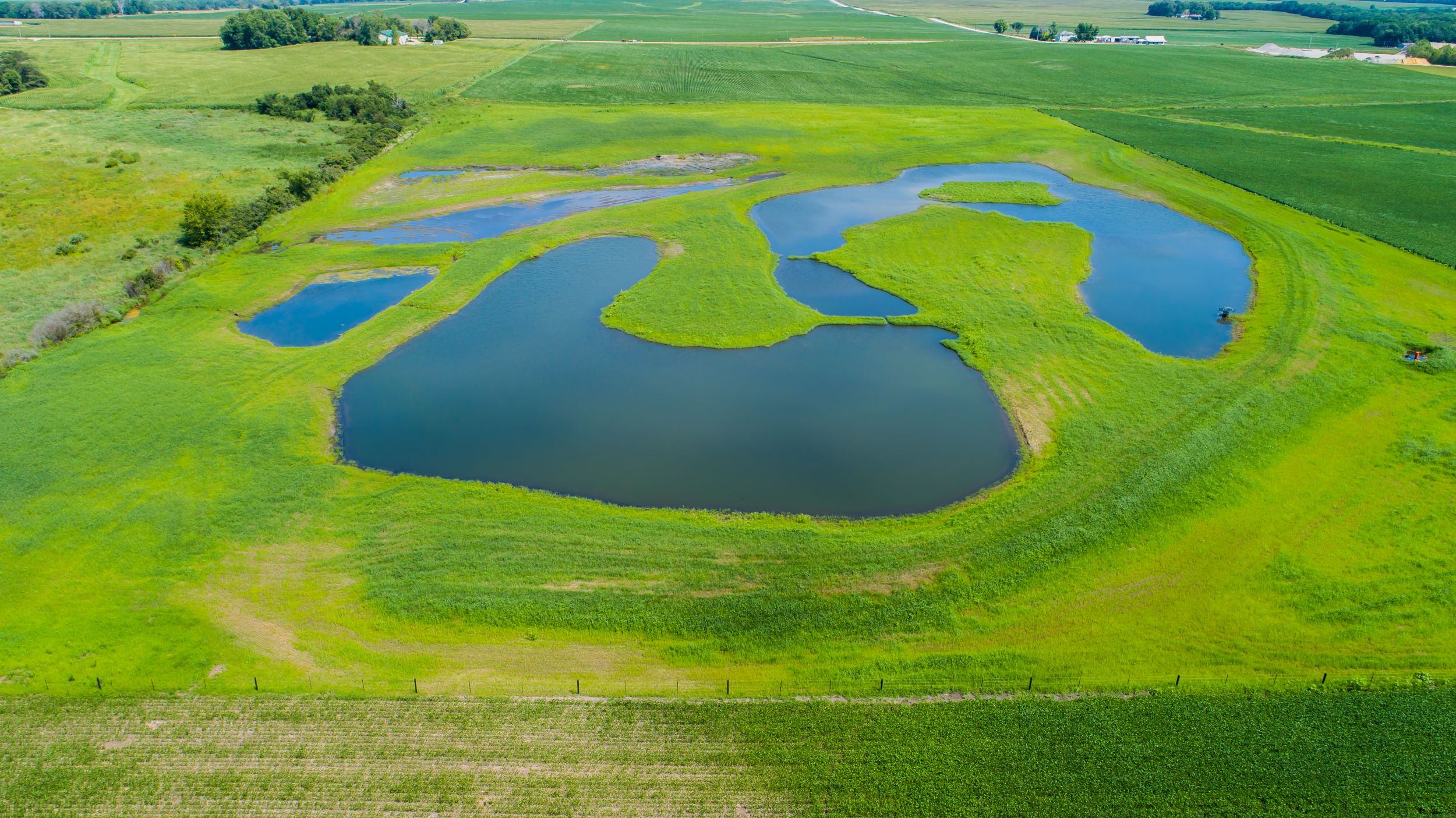Nature-Based Solutions
What are Nature-based Solutions?
Nature-based Solutions, or NBS, are sustainable engineered designs or policies that use natural processes and features to address pressing societal and economic challenges in a cost-effective and sustainable way. Within the Mississippi River Watershed, NBS practices that help retain water on the landscape in agricultural, residential, and floodplain settings can have many demonstrated ecological, social, and economic benefits. For example, these practices can help mitigate the impacts of flooding by:
-
-
-
-
- Wetland restoration, floodplain reconnection, and green infrastructure help mitigate flood and drought risks that threaten agriculture, manufacturing, transportation and energy sectors.
- Buffering extreme weather impacts reduces the costly damage to infrastructure and business operations, lowering financial risk.
- Nature-based flood mitigation helps stabilize food production and supply chains.
- Healthy flood-plain and wetland habitats reduce sedimentation and erosion that disrupt barge traffic and shipping.
- Regulating river flow keeps the Mississippi’s commercial navigation system running, which is vital for moving grain, fuel, and manufactured goods.
- Interception of pollutants and nutrients improve water quality for municipal and industrial users, lowering water treatment costs for drinking and processing.
- Restored natural areas attract outdoor recreation and tourism, which are significant contributors to regional economies.
- Recent studies have shown over 80% of cases found NBS to be more cost effective than traditional “gray” infrastructure for disaster risk reduction.
- Restored wetlands and floodplains capture carbon, helping industries and regions meet regulatory requirements.
-
-
-
Our Research
In August of 2024, AWI released a white paper entitled: “Policy Incentives and Disincentives to Water Retention Strategies in Agricultural, Residential, and Floodplain Settings in the Upper Mississippi River Basin” which explores how policies can be used to accelerate or impede the deployment of NBS, e.g., how policy can act as a lever. A lever is an intervention with a complex system where a small shift in one thing can produce big changes. Some of the primary practices considered as part of this study include levee set-backs, retention ponds, constructed wetlands, and a variety of in-field and edge-of-field practices.


Flood mitigation wetland constructed as part of the Iowa Watershed Approach in Bear Creek, a sub-watershed of the Middle Cedar. Used with permission, Iowa Watershed Approach
Green vs. Gray Infrastructure
Currently, water management in response to extreme precipitation remains heavily dominated by human-built or gray infrastructure. NBS, or green infrastructure, and its enormous potential are often under-utilized. AWI advocates for increased usage of a mix of green and gray infrastructure in order to combat the increased frequency and intensity of storms in the Watershed.
Our Findings
Our research revealed policy is indeed a barrier to implementation of NBS. There are administrative burdens associated with current policies including funding requirements and reporting. Through more than 50 interviews of practitioners in the field, we identified 10 key areas that can lead to improved deployment of Nature-based solutions, these include:
-
-
-
- Lowering Barriers to Participation
- Training
- Watershed Scale Planning
- Zoning and Hazard Mitigation Planning
- In field Practices
- Levee Setbacks
- Leadership
- Edge of Field practices
- One-Stop Shops
- Streamlining Implementation of Multiple Projects
-
-


Oxbox restoration project, constructed as part of the Iowa Watershed Approach. Used with permission, Iowa Watershed Approach.
